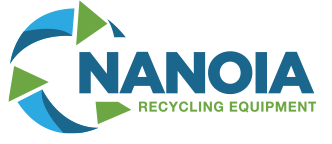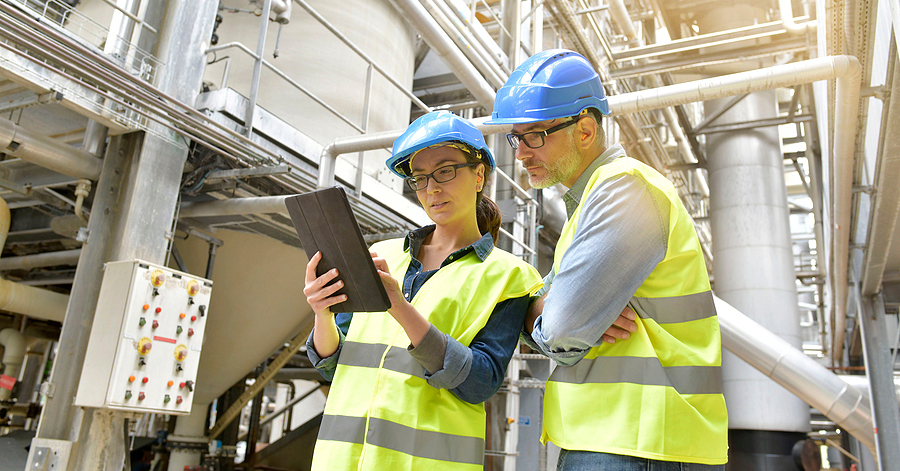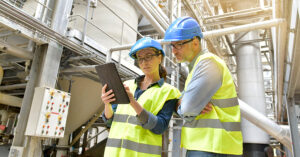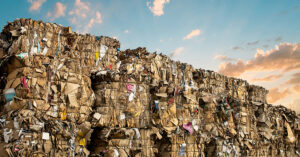Balers are essential tools in industrial recycling operations, allowing businesses to efficiently manage, compact, and transport recyclable materials. But not all balers are built the same. Two of the most common configurations—open-end and closed-end balers—serve very different operational needs. Understanding the differences between these two types is key to choosing the right equipment for your facility.
In this guide, we’ll break down the distinctions between open-end vs closed-end balers, including their structure, performance, material compatibility, and cost considerations. Whether you’re setting up a new recycling program or upgrading existing recycling equipment, this comparison will help you make an informed decision.
What Are Open-End and Closed-End Balers?
Open-End Balers
Open-end balers are typically horizontal machines with an open discharge chamber that allows bales to exit continuously. These units are commonly equipped with an automatic tying system, enabling high-throughput operation with minimal operator intervention. They’re ideal for large-scale facilities like distribution centers or manufacturing plants where recyclable materials are generated at a steady pace.
Closed-End Balers
Closed-end balers feature a sealed rear chamber and a gate at the end of the baling area. Bales are formed under pressure and then ejected—either manually or with the help of a hydraulic ram—once they reach the desired size and density. This configuration is better suited for dense, heavy materials and environments that prioritize compaction over speed.
Key Differences Between Open-End and Closed-End Balers
Baling Throughput and Efficiency
Open-End:
- Designed for continuous operation, ideal for facilities that generate recyclable materials around the clock.
- Equipped with automatic tying systems that reduce the need for manual labor.
- Capable of processing several tons of material per hour, depending on model and setup.
Closed-End:
- Operates in batch cycles, with each bale needing to be manually or semi-automatically ejected.
- More suitable for intermittent use or businesses with less volume.
- Provides a more controlled baling process, though at a slower pace.
Bale Density and Material Handling
Open-End:
- Produces very dense bales, especially in high-volume applications with consistent material feed.
- Ideal for materials like corrugated cardboard, shrink wrap, and mixed paper that benefit from continuous compression.
- Continuous operation allows for tighter compaction over time compared to intermittent systems.
Closed-End:
- Also capable of producing dense bales, especially for rigid or heavy materials like plastics and metals.
- Best suited for materials that need maximum compaction in shorter, controlled cycles.
- Ejection process allows for quick switching between materials with different densities.
Footprint and Space Requirements
Open-End:
- Requires a larger footprint, especially if paired with infeed conveyors.
- Best installed in facilities with ample floor space and material staging areas.
Closed-End:
- More compact, making it a better option for smaller warehouses or tight spaces.
- Easier to integrate in existing layouts without extensive facility modifications.
Cost Considerations
Capital Investment:
- Open-end balers typically come with a higher upfront cost, justified by their automation and throughput advantages.
- Closed-end balers are more budget-friendly for small to mid-sized operations.
Operational Costs:
- Open-end systems may involve higher maintenance expenses due to complex tying mechanisms and moving parts.
- Closed-end balers require more manual labor, but their simpler design often results in lower maintenance costs over time.
Material Types and Application Fit
| Material Type | Best Fit Baler | Notes |
| Cardboard (OCC) | Open-End | High volume, continuous feed |
| Shrink Wrap | Open-End | Lightweight and voluminous |
| Office Paper | Both | Depends on daily volume |
| Plastics (PET, HDPE) | Closed-End | High compaction needed |
| Aluminum Cans | Closed-End | Maximizes bale density |
Automation Options
Open-End:
- Supports fully automated configurations, including auto-tie, conveyor feeds, and bale separation systems.
- Ideal for reducing labor costs in high-volume facilities.
Closed-End:
- Usually configured for manual or semi-automated operation.
- Provides more operator control during the baling cycle.
When to Choose an Open-End Baler
Consider an open-end baler if:
- You process large volumes of recyclables daily.
- You need minimal operator involvement and automated operation.
- You prioritize throughput and want to minimize downtime.
When to Choose a Closed-End Baler
Choose a closed-end baler if:
- Your operation involves dense or hard-to-compact materials.
- You’re limited on space and need a compact solution.
- You prioritize maximum bale density over speed.
Integration and Customization Considerations
The success of your baling system often hinges on its integration into your existing workflow. Important customization options include:
- Conveyor systems, hoppers, and chutes for efficient material loading.
- Hydraulic power units configured to your facility’s specifications.
- Custom control panels for ease of use and safety compliance.
Maintenance and Repair Considerations
Balers—like all industrial equipment—require regular upkeep:
- Open-end balers often require more frequent servicing due to their automated tie systems and higher cycle rates.
- Closed-end balers, with fewer moving parts, may offer longer intervals between service needs.
- Preventive maintenance plans help ensure long-term performance and reduce unexpected downtime.
Financing Your Equipment
Budget is often a key factor in decision-making. At Nanoia Recycling Equipment, we offer:
- Flexible financing options for qualifying businesses.
- Guidance on calculating ROI based on material type and volume.
- Leasing and rental programs that include maintenance and support.
Conclusion: Choosing the Right Baler for Your Needs
Deciding between an open-end vs closed-end baler depends on many factors: material types, processing volume, available space, and your facility’s long-term needs. There’s no universal right answer—only the right fit for your operation.
Why Partner with Nanoia Recycling Equipment?
At Nanoia, we go beyond simply supplying balers—we deliver full-service solutions:
- Custom system design and fabrication
- Professional installation and operator training
- Reliable maintenance and responsive repair services
- Financing options tailored to your budget
With over 40 years of experience in the industry, we’re here to help you find the ideal baler setup for your unique business needs.






